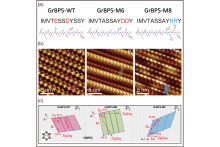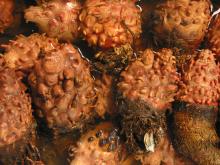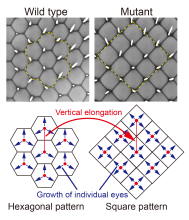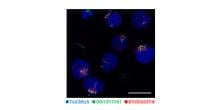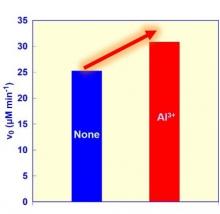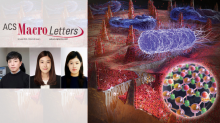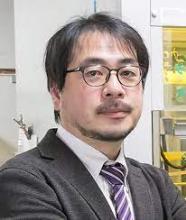Materials Science and Engineering Biomaterials
News
28 Feb 2024
In a study recently published in the journal SMALL, a weekly peer-reviewed scientific journal covering nanotechnology, published by Wiley-WCH, Germany, researchers from Nano Life Science Institute (WPI-NanoLSI), Kanazawa University, Japan, collaborating with Professor Sarikaya, Seattle, USA, used frequency modulated atomic force microscopy to reveal the molecular architecture of genetically designed and point mutated peptides and their self-organizations each forming single-molecule thick, distinct biological crystals on atomically flat graphite and MoS2 surfaces, offering a potential platform for hybrid technologies such as bioelectronics, biosensors, and protein arrays.
15 Feb 2024
Vaccines and therapies based on messenger RNA could be more readily delivered due to a non-toxic polymer that protects RNA and controls its release inside cells.

14 Mar 2023
In a study recently published in the journal ACS Nano, published by American Chemical Society, researchers from Kanazawa University, Kanazawa, Japan, collaborating with University of Washington, Seattle, USA, used frequency modulated atomic force microscopy to reveal the molecular architecture of a genetically designed peptide and its self-organization that forms single-molecule thick crystals on atomically flat graphite surfaces, that offer a potential platform for hybrid technologies such as bioelectronics, biosensors, and protein arrays.
03 Mar 2023
Bacteria living on soil and chicken manure could provide low-tech and sustainable green electricity.
03 Mar 2023
Researchers are working to overcome challenges in order to bring wearable, electric, wound-healing devices to clinical practice.
03 Mar 2023
Hi-tech electrocatalysts made from seashells and waste animal blood could help build sustainable batteries, fuel cells and other electrochemical systems.
27 Feb 2023
Scientists at Tokyo Medical and Dental University have discovered a new type of bone repairing material that could be used to more precisely fix bone defects.
20 Sep 2022
A research group led by the Institute of Industrial Science, The University of Tokyo, finds that sensory neurons in human skin modulate melanocytes via the secretion of Repulsive Guidance Molecule B
20 Apr 2022
Tile patterns in which the same shape is laid out without gaps are found in the compound eyes of insects. Hexagonal tile patterns are common while shrimp eyes have a square pattern. We investigated tile pattern formation using Drosophila and revealed that the compound eye tile pattern is controlled by a geometrical division mechanism, Voronoi tessellation, in addition to physical constraints determined by the combination of the regular distribution and growth of the individual eyes.
16 Feb 2022
This is a novel study that attempted to construct a pH-sensitive delivery system into T cells and their subsets using carboxy-terminal Phe- and CHex-modified dendrimers with different structures, i.e. PAMAM-CHex-Phe and PAMAM-Phe-CHex. The findings contribute to the development of nanoplatforms for direct delivery to T cells to control the functions of T cells, which play key roles in cancer immunotherapy. This is the first report on direct delivery into T cells using pH-sensitive DDS.
12 May 2021
From biomemory to implants, researchers are looking for ways to make more eco-friendly electronic components.
29 Sep 2020
Researchers at Osaka City University produce malic acid, which contains 4 carbon atoms, through artificial photosynthesis by simply adding metal ions like aluminum and iron. This solves a problem with current artificial photosynthesis technology of only producing molecules with 1 carbon atom and paves the way to exploring the use of CO2 as a raw material.
26 Aug 2019
A recent study, affiliated with South Korea's Ulsan National Institute of Science and Technology (UNIST) has gained sufficient attention among researchers for introducing a powerful antifouling material, inspired from marine plants.
06 Jun 2019
The Hong Kong Polytechnic University (PolyU) today announced the signing of a collaborative framework agreement with Wuyi University (WYU). The two universities will join hands for research on the development of green and healthy textile materials over a span of three years.
Events
Sorry, nothing coming up for this discipline
Researchers
Taishi Yokoi is an Associate Professor of the Institute of Biomaterials and Bioengineering at Tokyo Medical and Dental University. His research areas include biomedical engineering, inorganic compounds and inorganic materials chemistry.
Prof. Hiroshi Yabu is a Professor and Principal Investigator at the Advanced Institute for Materials Research (WPI-AIMR) at Tohoku University. His research interests include self-organization, biomimetics, and bio-inspired materials for energy and low environmental impacts.
He is currently an assistant researcher in Jilin University. His research focuses on functional surfaces, bioinspired antifouling coatings, and medical antifouling materials.
Biomaterials Scientist working on surface engineering of medical implants used for the replacement of hip knee, cardiac and dental .
I am a leading expert in the reconstruction of an artificial cell membrane as a novel system for screening side effects of drugs on the heart. This system can assess the potential risks of drugs that unintentionally interfere with the function of membrane proteins in the heart muscle.
Giants in history
Sorry, nothing coming up for this discipline


